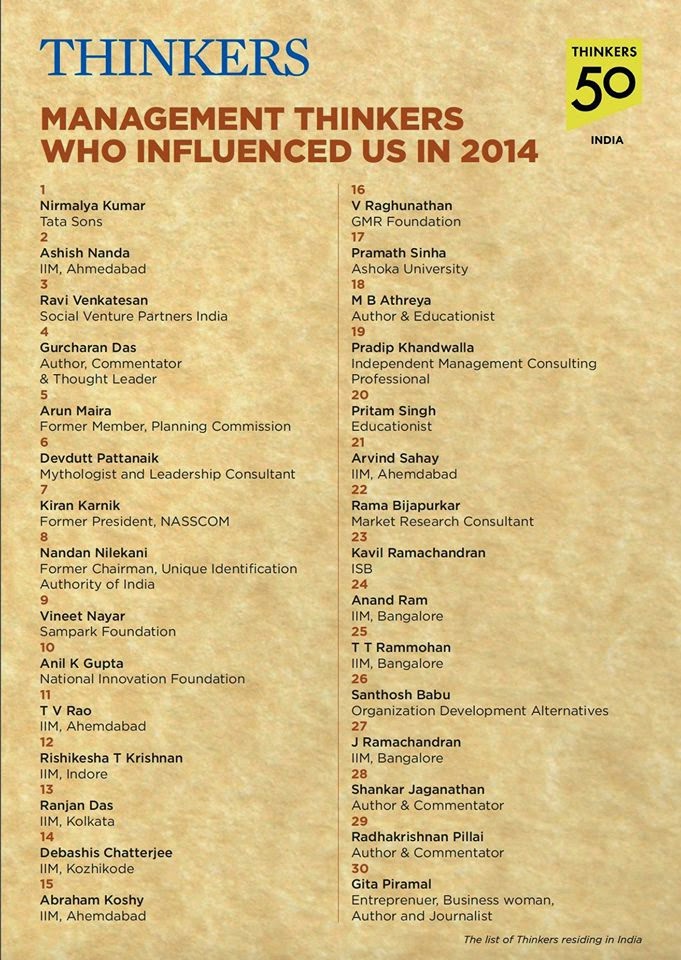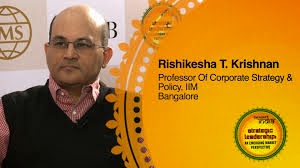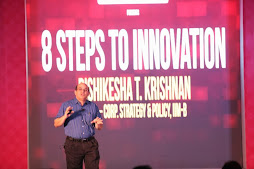When this book by UK-based science journalist Angela Saini was launched last year, it was prominent on the display at airport bookstores. I must confess that I thumbed through it a couple of times but found the sub-title so incredulous that I couldn’t get myself to buy it. After all, while India’s scientific output has improved in recent years, our overall impact in scientific research leaves much to be desired. I finally gave in and ordered this book from an online bookstore when I realized that this was the one prominent book on innovation in India in recent years that I had missed out.
Once I started reading it, I found a more balanced picture than the title suggests. While Angela lauds the successes of Indian science and technology (e.g. the Space programme, Atomic Energy), she identifies some of the paradoxes as well – the high quality of IIT students yet their apparent lack of creativity; the co-existence of superstitions and rituals with the scientific method amongst several of India’s top researchers; and the emergence of a successful modern software industry co-terminus with a belief that much of fundamental scientific knowledge was described in the Vedas.
Open Source Drug Discovery: An Alternate Research Paradigm?
Angela identifies correctly one area in which India could establish a new paradigm – the Open Source Drug Discovery programme of CSIR which brings scientists from around India (and even other countries) to work together and share data towards the development of a new drug for tuberculosis. She points out that such joint working can overcome resource constraints and use India’s key advantage – access to hundreds of relatively low-cost scientific and technical personnel who may lack deep technical knowledge but have the energy and enthusiasm to work long hours to, for example, map out the genome of the TB bacillus. However, I am skeptical of the picture she paints of the selfless Indian scientist who is happy to collaborate with others and is indifferent to receiving credit or rewards – that certainly doesn’t gel with the picture we get of rising individualism and competitiveness in the Indian workplace, and the challenges in getting teams to work well in India.
Does the lack of strait-jacketing help us produce breakthrough ideas?
Another observation of hers that seems plausible but is not corroborated in practice is that since the scientific method and paradigm boundaries are relatively less defined in India, scientific research can be less strait-jacketed and has greater potential to come up with new theories and insights. While it seems true that Indian science is not subject to the same rigid boundaries and protocols that western science is, there is hardly any evidence that this “freedom” is enabling Indian scientists to come up with new perspectives. Instead, we probably have the worst of both worlds – no genuinely path-breaking ideas, and not enough discipline to drive a steady output of what Thomas Kuhn called “normal science.”
Do we test new gadgets well enough?
But I do agree with her observation that we are willing to embrace and use gadgets that are inadequately tested and validated. Angela gives the example of an apparatus using Brain Electrical Oscillations test developed by an Indian inventor to identify whether accused are related to a crime that is in use by some of India’s police departments. From what she describes of the device, its scientific foundations are quite shaky, and I can’t imagine too many other countries being willing to use this in their criminal justice system. [In fact, another example that Angela doesn’t mention is the Electronic Voting Machine used by India’s Election Commission which has been criticized by many scholars for its low levels of transparency and verifiability.]
On Genetically Modified Crops
Angela’s contention that genetically-modified (GM) crops have been opposed only because they have been promoted by multinational corporations with monopoly profits in mind, and that finally the Indian farmer will adopt whatever raises his output and makes business sense could be true, though only time will tell. However, the opponents of GM crops can’t be taken lightly, and when you combine their fervor and passion with the lack of understanding of scientific issues by key decision makers, there is a good chance that those opposed to GM crops will hold sway for quite some time [remember the prolonged grounding of Indian Airlines’ entire A320 fleet two decades ago after one plane crashed? Key political decision-makers were paralyzed , and preferred to be over-cautious!].
Conclusion
Overall, this is a breezy read, with several interesting characters such as IIT students, ISRO chairmen, scientists from across the country, and even Vedic scholars thrown in. Angela is a capable journalist, and knows how to tell a good story. Perhaps the sub-title of the book – about Indian Science taking over the world – was put in just to help sell the book, but that’s just a red herring and doesn’t represent what she actually has to say! Her conclusion is that Indian science and technology is trying to solve people’s problems at low cost and this may not be reflected in the way S&T is usually measured. While the latter is true, as I have argued before, the jury is still out as to whether India has mastered the art of applying science and technology for such frugal innovation.
Once I started reading it, I found a more balanced picture than the title suggests. While Angela lauds the successes of Indian science and technology (e.g. the Space programme, Atomic Energy), she identifies some of the paradoxes as well – the high quality of IIT students yet their apparent lack of creativity; the co-existence of superstitions and rituals with the scientific method amongst several of India’s top researchers; and the emergence of a successful modern software industry co-terminus with a belief that much of fundamental scientific knowledge was described in the Vedas.
Open Source Drug Discovery: An Alternate Research Paradigm?
Angela identifies correctly one area in which India could establish a new paradigm – the Open Source Drug Discovery programme of CSIR which brings scientists from around India (and even other countries) to work together and share data towards the development of a new drug for tuberculosis. She points out that such joint working can overcome resource constraints and use India’s key advantage – access to hundreds of relatively low-cost scientific and technical personnel who may lack deep technical knowledge but have the energy and enthusiasm to work long hours to, for example, map out the genome of the TB bacillus. However, I am skeptical of the picture she paints of the selfless Indian scientist who is happy to collaborate with others and is indifferent to receiving credit or rewards – that certainly doesn’t gel with the picture we get of rising individualism and competitiveness in the Indian workplace, and the challenges in getting teams to work well in India.
Does the lack of strait-jacketing help us produce breakthrough ideas?
Another observation of hers that seems plausible but is not corroborated in practice is that since the scientific method and paradigm boundaries are relatively less defined in India, scientific research can be less strait-jacketed and has greater potential to come up with new theories and insights. While it seems true that Indian science is not subject to the same rigid boundaries and protocols that western science is, there is hardly any evidence that this “freedom” is enabling Indian scientists to come up with new perspectives. Instead, we probably have the worst of both worlds – no genuinely path-breaking ideas, and not enough discipline to drive a steady output of what Thomas Kuhn called “normal science.”
Do we test new gadgets well enough?
But I do agree with her observation that we are willing to embrace and use gadgets that are inadequately tested and validated. Angela gives the example of an apparatus using Brain Electrical Oscillations test developed by an Indian inventor to identify whether accused are related to a crime that is in use by some of India’s police departments. From what she describes of the device, its scientific foundations are quite shaky, and I can’t imagine too many other countries being willing to use this in their criminal justice system. [In fact, another example that Angela doesn’t mention is the Electronic Voting Machine used by India’s Election Commission which has been criticized by many scholars for its low levels of transparency and verifiability.]
On Genetically Modified Crops
Angela’s contention that genetically-modified (GM) crops have been opposed only because they have been promoted by multinational corporations with monopoly profits in mind, and that finally the Indian farmer will adopt whatever raises his output and makes business sense could be true, though only time will tell. However, the opponents of GM crops can’t be taken lightly, and when you combine their fervor and passion with the lack of understanding of scientific issues by key decision makers, there is a good chance that those opposed to GM crops will hold sway for quite some time [remember the prolonged grounding of Indian Airlines’ entire A320 fleet two decades ago after one plane crashed? Key political decision-makers were paralyzed , and preferred to be over-cautious!].
Conclusion
Overall, this is a breezy read, with several interesting characters such as IIT students, ISRO chairmen, scientists from across the country, and even Vedic scholars thrown in. Angela is a capable journalist, and knows how to tell a good story. Perhaps the sub-title of the book – about Indian Science taking over the world – was put in just to help sell the book, but that’s just a red herring and doesn’t represent what she actually has to say! Her conclusion is that Indian science and technology is trying to solve people’s problems at low cost and this may not be reflected in the way S&T is usually measured. While the latter is true, as I have argued before, the jury is still out as to whether India has mastered the art of applying science and technology for such frugal innovation.

















No comments:
Post a Comment